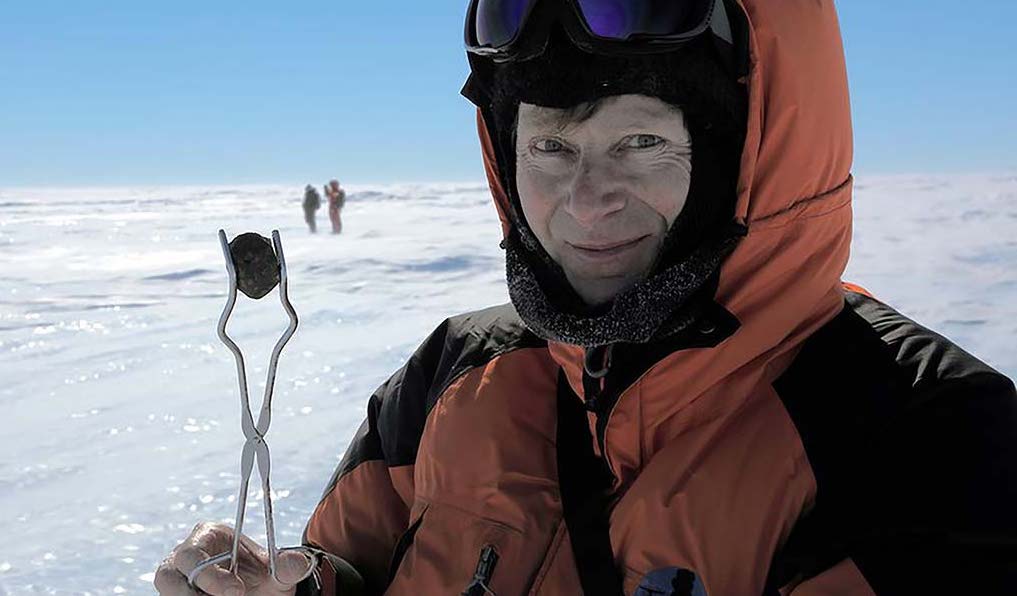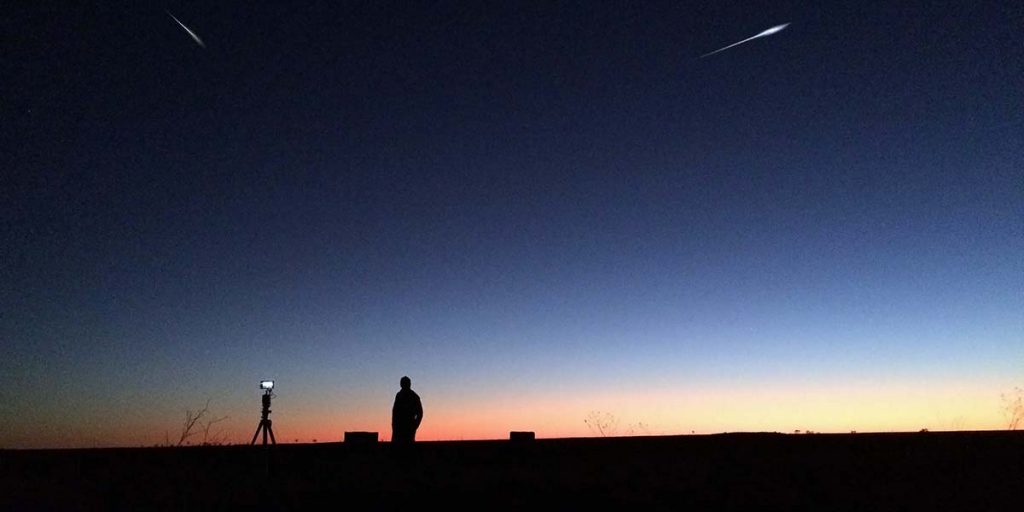By Glenn Dunks
We're not covering TIFF more broadly this year, but I was lucky to snag a screener or two so we'll be writing about them in a couple of additional Doc Corner columns.

One of my favourite bits of movie trivia is that Werner Herzog is the only filmmaker to have ever directed feature-length films on every single continent. He completed that unique party trick with his 2007 Oscar-nominated documentary Encounters at the End of the World. I’m sure that if he could, he would make a movie in space. For now, however, his latest feature doc about the elements of space will have to suffice.
Fireball: Visitors from Darker Worlds begins in the terrestrial outback of Australia and ends in the shimmering blue plateaus of Antarctica with just about every other continent in between (he just can’t help himself). Herzog traces the history of meteorites with regular collaborator and first-time co-director Clive Oppenheimer...
Herzog and Oppenheimer, the curly-haired volcanologist from the University of Cambridge with a love of tweed, first met on the aforementioned Encounters, which explored the otherworldly landscapes of Antarctica. The pair later globe-trotted for the excellent Into the Inferno about volcanoes. If their third collaboration isn’t quite as good as those, it nonetheless feels like a healthy and regenerative step forwards after coming across as semi-interested at best on films like Meeting Gorbachev and Lo and Behold: Reveries of the Connected World.
Herzog here appears to once again be relishing his script, the German filmmaker’s famous accent and dynamic speaking patterns wrapping around narration about unimaginable apocalypses, cosmos currency, stardust, and the very formation of life itself with gusto. Only Herzog could describe a meteorite crashing into a 1400s field as “an email sent from god.” He sounds genuinely enthused by the places he and Clive visit including a Thai temple within a meteor crater, Mayan watering holes created by the rock that brought the dinosaurs to extinction, a Hawaiian observatory and other far-flung destinations.
Even more so than his narration, Herzog’s intense awe is perhaps best and most quietly seen in his camerawork where the camera is but a natural extension of his own POV. Rather than sitting unobtrusively to the side as Oppenheimer interviews experts and historians, his camera engages with the conversation as if truly a part of it himself. When somebody notes something particularly interesting, rather than a quick edit or a smooth zoom he often ineligantly moves the camera in for a close-up like one naturally would when peeking at a gemstone or piece of moon rock. It focuses on things that capture his attention; it drifts around his subjects rather than reservedly pretending he not there. It’s simple but allows for greater engagement with material that is often far too scientific for somebody like me to understand. Subjects look directly down the lens for a few seconds too long to be natural, as if Herzog himself is attempting to capture something about the universe in their eyes. We are all made of stardust after all (according to one scientist).

As is his want, Herzog inserts clips from other movies, often crudely. Here he notes his love for how meteors are portrayed in film with a particular fondness for 2010’s Last Day of the Dinosaurs and (my beloved) Deep Impact to which he explains Mimi Leder’s 1998 film as beautifully done. This elicits enough of a gut laugh to sustain any on-screen lulls in laboratories about quasi crystals. In fact, the whole film is funny, and not just in the way most things Herzog does have a tinge of comedy. At other times, it strikes as attempting profundity although its more successful at the former. He’s often at his best when he mixes the two like on a visit to a town in the Chicxulub crater, “a place so godforsaken it makes you want to cry” with streets full of dogs that “are too dim-witted to understand that three-quarters of all species were extinguished in this place.” It’s a dark humour, but damn.
Fireball may lack the sort of truly expansive philosophy that one may expect from Herzog ruminating over space, but it has an attentive curiosity that in some way recognizes that so much is left truly unknown (and unknowable). Particular so when sunset falls on the Torres Strait Islands at film’s end, with locals performing a rarely-seen star dance. Herzog probably knows better than any other filmmaker just how expansive this planet is and that it is impossible to truly grasp it. And here, in places that many consider the fringes of the planet, Fireball most eloquently exemplifies that.